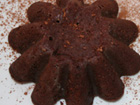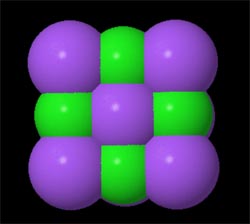Science of Chocolate
History of Chocolate
Chocolate has been used in drinks for nearly 4000 years. For example, one vessel found at an Olmec archaeological site on the Gulf Coast of Veracruz, Mexico, dates chocolate's preparation by pre-Olmec peoples as early as 1750 BC. On the Pacific coast of Chiapas, Mexico, a Mokaya archaeological site provides evidence of cacao beverages dating even earlier, to 1900 BC.
By the 15th century, the Aztecs gained control of a large part of Mesoamerica and adopted cacao into their culture. They associated chocolate with Quetzalcoatl, who, according to one legend, was cast away by the other gods for sharing chocolate with humans, and identified its extrication from the pod with the removal of the human heart in sacrifice. In contrast to the Maya, who liked their chocolate warm, the Aztecs drank it cold, seasoning it with a broad variety of additives, including the petals of the Cymbopetalum penduliflorum tree, chile pepper, allspice, vanilla, and honey. Read more on History of Chocolate
Molccules found in chocolate
Cocoa liquor contains over 300 chemical compounds that give chocolate its addictive, aphrodisiac and euphoria-inducing attributes. Among the molecules are: anandamide, theobromine, phenylethylamine, tetrahydro-beta-carbolines, epicatechin, serotonnin, tryptophan and procyanidins. Read about these Drug Molecules found in chocolate.
Health Benefits of Chocolate
The reasoning being that the cocoa bean is rich in a class of plant nutrients called flavonoids. Flavonoids help protect plants from environmental toxins and help repair damage. Flavanols are the main type of flavonoid found in cocoa and chocolate. In addition to having antioxidant qualities, research shows that flavanols have other potential influences on vascular health, such as lowering blood pressure, improving blood flow to the brain and heart, and making blood platelets less sticky and able to clot. Read more about health benefits of chocolate.
How is Chocolate Made?
The seeds of the cacao tree have a bitter taste and must first be fermented to develop flavor. After fermentation the beans are dried, cleaned and then roasted. The shell of the cacoa bean is removed to produce cacao nibs. The nibs are then ground to produce cocao mass or pure chocolate in a rough form. This cocoa mass is usually in a liquid form (chocolate liquor) and is usually mixed with other components to form commercial chocolate. The liquor may also be processed in it's two components, cocoa solids and cocoa butter. Read more about how chocolate is made.
Physiological effects
Toxicity in animalsIn sufficient amounts the theobromine found in chocolate is toxic to animals such as horses, dogs, parrots, and cats, because they are unable to metabolize the chemical effectively. If they are fed chocolate, the theobromine will remain in their blood for up to 20 hours, and these animals may experience epileptic seizures, heart attacks, internal bleeding, and eventually death. Medical treatment involves inducing vomiting within two hours of ingestion, or contacting a veterinarian.
A typical 20-kilogram dog will normally experience intestinal distress after eating less than 240 grams of milk chocolate, but will not necessarily experience bradycardia or tachycardia unless it eats at least a half a kilogram of milk chocolate. If it does not expel the chocolate from its system because of the fat and sugar content, then it would have a 50% chance of surviving after eating 5 kilograms. Dark, sweet chocolate has about 50% more theobromine and thus is more dangerous to dogs. According to the Merck Veterinary Manual, approximately 1.3 grams of baker's chocolate per kilogram of a dog's body weight (0.02 oz/lb) is sufficient to cause symptoms of toxicity. For example, a typical 25-gram baker's chocolate bar would be enough to bring about symptoms in a 20-kilogram dog.
Health benefits
Recent studies have shown that cocoa or dark chocolate has potent health benefits for people. Dark chocolate is full of the flavonoids epicatechin and gallic acid, which are antioxidants that help protect blood vessels, promote cardiac health, and prevent cancer. It also has been effectively demonstrated to counteract mild hypertension. In fact, dark chocolate has more flavonoids than any other antioxidant-rich food such as red wine, green and black tea, and blueberries. There has even been a fad diet named "Chocolate diet" that emphasis's eating chocolate and cocoa powder in capsules. However, consuming milk chocolate or white chocolate, or drinking milk with dark chocolate, appears to largely negate the health benefits. Chocolate is also a calorie-rich food with a high content of saturated fat, so daily intake of chocolate also requires reducing caloric intake of other foods.
Two-thirds of the fat in chocolate comes in the form of two saturated fats called stearic acid and oleic acid. However, unlike other saturated fats, these two do not raise levels of LDL cholesterol in the bloodstream. A 2001 study by researchers at Penn State University found that the flavonoids in chocolate slowed the oxidation of LDL cholesterol, a process that is believed to lead to atherosclerosis.
Medical applications
Mars, Incorporated, a Virginia-based candy company, spends millions of dollars each year on flavanol research. The company is in talks with pharmaceutical companies to license drugs based on synthesized cocoa flavanol molecules. According to Mars-funded researchers at Harvard, the University of California, and European universities, cocoa-based prescription drugs could potentially help treat diabetes, dementia and other diseases.
Mars is presently marketing the Cocoavia brand , a line of functional food chocolates which have cholesterol-reducing phytosterols and at least 100 milligrams of flavanols. The snacks are designed to be eaten primarily for heart benefits, and as such, Mars has recommended a regimen of two snacks per day.
Chocolate as a drug
Current research indicates that chocolate is a weak stimulant because of its content of theobromine. However, chocolate contains too little of this compound for a reasonable serving to create effects in humans that are on par with a coffee buzz. Aptly spoken by the pharmacologist Ryan J. Huxtable, "[Chocolate is] more than a food but less than a drug". However, chocolate is a very potent stimulant for dogs and horses; its use is therefore banned in horse-racing. Some chocolate products contain synthetic caffeine as an additive.
Chocolate also contains small quantities of the endogenous cannabinoid anandamide and the cannabinoid breakdown inhibitors N-oleoylethanolamine and N-linolenoylethanolamine. Anandamides are produced naturally by the body, in such a way that their effects are extremely targeted (compared to the broad systemic effects of drugs like tetrahydrocannabinol) and relatively short-lived. In experiments N-oleoylethanolamine and N-linolenoylethanolamine interfere with the body's natural mechanisms for breaking down endogenous cannabinoids, causing them to last longer. However, noticeable effects of chocolate related to this mechanism in humans have not yet been demonstrated.
Lead
Chocolate has one of the highest concentrations of lead among all products that constitute a typical Westerner's diet. This is thought to happen because the cocoa beans are mostly grown in developing countries such as Nigeria. Those countries still use tetra-ethyl lead as a gasoline additive and, consequently, have high atmospheric concentrations of lead. According to the US Food and Drug Administration, levels of lead in chocolate are sufficiently low that even people who eat large amounts of chocolate every day are not at risk of any adverse effects. Some products have lower levels.
Conching
The penultimate process is called conching. A conche is a container filled with metal beads, which act as grinders. The refined and blended chocolate mass is kept liquid by frictional heat. The conching process produces cocoa and sugar particles smaller than the tongue can detect; hence the smooth feel in the mouth. The length of the conching process determines the final smoothness and quality of the chocolate. High-quality chocolate is conched for about 72 hours, lesser grades about four to six hours. After the process is complete, the chocolate mass is stored in tanks heated to approximately 45–50 °C (113-122 °F) until final processing.
Tempering
The final process is called tempering. Uncontrolled crystallization of cocoa butter typically results in crystals of varying size, some or all large enough to be clearly seen with the naked eye. This causes the surface of the chocolate to appear mottled and matte, and causes the chocolate to crumble rather than snap when broken. The uniform sheen and crisp bite of properly processed chocolate are the result of consistently small cocoa butter crystals produced by the tempering process. Additionally, since cocoa butter exhibits a polymorphous crystal formation, care must be taken during tempering to insure the formation of the most stable of the possible crystal forms, so that the appearance of the chocolate does not degrade over time. These goals are achieved by careful manipulation of temperature during the crystallization of the chocolate. Firstly, the mass is cooled from about 45 °C (113 °F) to about 27 °C (80 °F). Agitation during cooling precipitates the formation of large quantities of small crystal "seed" which will serve as nuclei for the final crystallization of the chocolate. The chocolate is then rewarmed to about 31 °C (88 °F) to eliminate unstable crystal forms and reduce the viscosity of the chocolate. The chocolate is then ready for use in molding or coating, after which it is allowed to cool.
Chocolate and a vegan diet
It can be difficult to identify vegan chocolate. Milk chocolate does not qualify because of the added milk, but even chocolate labelled as "dark" may contain milk ingredients. For example, Hershey's Special Dark contains milk. Unless the chocolate is specifically labelled as vegan, another complication for strict vegans is that the sugar used in a particular chocolate may have been processed with bone char.
|
Science of Chocolate

What are the health benefits of Chocolate?
What are the drugs in Chocolate?
Research on Chocolate and Cocoa
Who makes the best Chocolate in the World?
Related Coffee Sites
See also:
Chemical compounds in coffee that produce aroma and bitterness
Science behind pulling the perfect espresso shot
Science of Cooking
See also:
